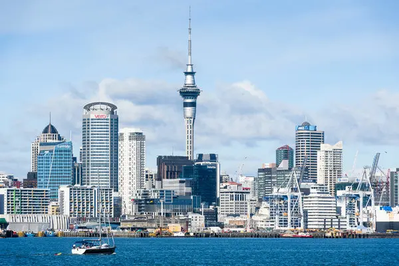New Zealand
- To-Go

- Jun 4, 2022
- 3 min read
Updated: Sep 20, 2022
Country Name
New Zealand.
Location
New Zealand is a sovereign island country in the southwestern Pacific
Ocean. New Zealand is about 2,000 kilometers (1,200 mi) east of Australia across the Tasman Sea and 1,000 kilometers (600 mi) south of the Pacific island areas of New Caledonia, Fiji, and Tonga.

Capital
Wellington.
Reason For Naming
The name "New Zealand" comes from “Zeeland” which translates to "Sealand" in Dutch, after it was sighted by Dutch explorer Abel Tasman. Zeeland is a province in the Netherlands.
The Maori* did not have a name for their islands as a whole. After New Zealand was formed by treaty the name Aotearoa was created to name the new country in Maori. In the Māori language, it means "Land of the Long White Cloud". Ao means “cloud”, tea means “white”, and roa means “long”.
*The original people of New Zealand
Flag
The flag of New Zealand was adopted on 24 March 1902. It is also known as the New Zealand Ensign, and it is based on the British maritime Blue Ensign. The design of the flag features a blue background with a Union Jack in the canton. On the right side of the flag are four red stars bordered by white the Southern Cross.
The Union Jack symbolizes New Zealand’s history as a British colony.
This design incorporates three heraldic crosses:
The Southern Cross is a representation of New Zealand’s sky. New Zealand and other nations in the Southern Hemisphere can see the Southern Cross constellation that this is meant to symbolize.
The Union Jack represents the close relationship between New Zealand and the United Kingdom, as well as New Zealand’s past as a colony of Great Britain.
The Southern Cross shows the South Pacific Ocean location of the country. The blue color represents the sky and the sea.
Flag Facts
- The flags of Australia and New Zealand are similar and both feature a blue background including a Union Jack and the Southern Cross constellation.

Language
New Zealand English is the language of the majority of New Zealand. Māori is the dominant indigenous language spoken in the nation. Several other native languages are spoken in the outlying islands and territories of New Zealand as Cook Islands Māori, Niuean, Tokelauan, and Penrhyn. Immigrant Languages Spoken In New Zealand Samoan, Cook Islands Māori, Indian languages like Hindi, Yue Chinese, and Arabic.
Religion
The majority of people in New Zealand were Christians nearly 48% of the population. Adherents of Christianity include the Roman Catholic Church and the Anglican Church,
Other minority religions that had a significant presence in New Zealand were Hinduism, Buddhism, Islam, and Judaism.
A small population of the Maori people still practiced the traditional Maori religion.
Currency
New Zealand dollar ($) (NZD).

Time Zone
+12:00 GMT
+13:00 GMT (summer time)
Government Regime
Unitary parliamentary constitutional monarchy
Climate
New Zealand's seasons are the opposite of the northern hemisphere's - summer starts in December, autumn in March, winter in June, and spring in September.
January and February are the warmest months, with July the coldest. New Zealand's maritime climate is temperate with an average of roughly 2000 sunshine hours a year. Overall, the climate is fairly mild with few extremes of temperatures.
The average temperature ranges from 15°C in the upper regions of the North Island to 10°C near the bottom of the South Island.
Average temperatures range from 7°C in winter to 16°C in summer, although in many places, summer temperatures can reach the 30s.
The best time to visit New Zealand is the austral summer, from December to March, since it is pleasantly warm on the North Island and cool on the South Island. If you want to visit the country in winter, for example in August, you can choose the North Island, which is milder and more sheltered from cold waves, and maybe you can combine the exploration of the cities with a bit of skiing in the mountains.










Comments